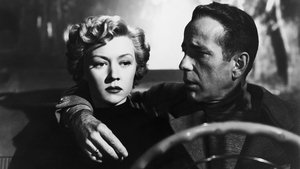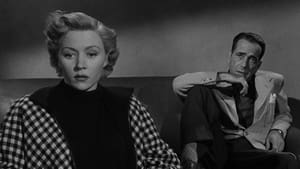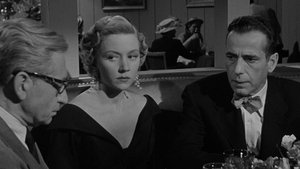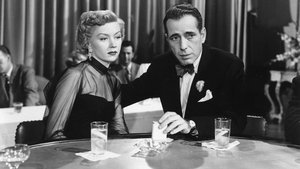Contact: info@alwanfilm.com
Video Sources 0 Views
- Watch trailer
- In a Lonely Place

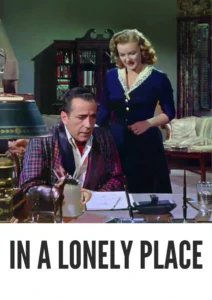
Synopsis
Table of Contents
ToggleReview: In a Lonely Place 1950 Colorized – A Haunting Noir Masterpiece

Introduction
In a Lonely Place, released in 1950, is a captivating film noir directed by Nicholas Ray that delves into the dark recesses of the human psyche. Renowned for its brooding atmosphere, complex characters, and gripping narrative, this classic film continues to enthrall audiences with its timeless exploration of love, obsession, and betrayal. In this review, we’ll delve into the haunting beauty of In a Lonely Place and its enduring legacy in the world of cinema.
Check The Full Colorized Movies List
Check Our Colorized Movies Trailer Channel
Understanding In a Lonely Place 1950 Colorized: Director, Cast, and Genre
Directed by Nicholas Ray, In a Lonely Place features a stellar cast led by Humphrey Bogart and Gloria Grahame. The film belongs to the film noir genre, known for its dark themes, morally ambiguous characters, and atmospheric cinematography.
Exploring the World of In a Lonely Place 1950 Colorized: Plot and Characters
In a Lonely Place follows the story of Dixon Steele, a troubled screenwriter with a volatile temper and a dark past. When a young woman is murdered, Dixon becomes the prime suspect, leading him to form a tumultuous relationship with his neighbor, Laurel Gray. As the investigation unfolds, Dixon’s volatile behavior and inner demons threaten to consume him, casting doubt on his innocence and pushing him to the brink of self-destruction.
The Art of Film Colorization
While In a Lonely Place was originally filmed in black and white, its early colorized version adds a new layer of depth to its atmospheric visuals. The colorization process enhances the film’s moody atmosphere and captures the nuances of its shadowy characters with striking clarity.
Early Colored Films: A Brief History
The history of early colored films is marked by innovation and experimentation as filmmakers sought to enhance the visual appeal of their movies. From hand-tinted frames to pioneering technicolor processes, the evolution of colorization techniques transformed the cinematic landscape, offering audiences a new way to experience the darkness and intensity of film noir.
In a Lonely Place (1950) and Its Early Colored Version
The decision to release In a Lonely Place in a colorized format was made with the intention of immersing audiences in the haunting beauty of its atmospheric cinematography and enhancing the film’s visual impact. While some purists may prefer the original black and white version, the early colorized edition of In a Lonely Place adds a new layer of depth to its brooding atmosphere and captures the psychological complexity of its characters with breathtaking clarity.
The Debate Over Film Colorization
The debate over film colorization continues to divide audiences and industry professionals alike. While some argue that colorization breathes new life into classic films and makes them more accessible to modern audiences, others maintain that it compromises the artistic integrity of the original work. As technology advances and filmmaking techniques evolve, the debate over colorization remains a topic of ongoing discussion within the film community.
Examining In a Lonely Place (1950) as an Early Colored Film
Viewing In a Lonely Place in its early colorized iteration offers audiences a fresh perspective on its haunting visuals and psychological depth. The colorization process enhances the film’s moody atmosphere and captures the complexity of its characters with stunning clarity. As viewers are drawn into the dark and twisted world of Dixon Steele, they are treated to a visual feast that immerses them in the haunting beauty of film noir.
Influence and Legacy: In a Lonely Place 1950 Colorized’s Impact on Cinema
In a Lonely Place is widely regarded as a masterpiece of the film noir genre that continues to captivate audiences with its atmospheric cinematography and gripping storyline. Its exploration of themes such as love, obsession, and betrayal resonates with viewers of all ages, making it a timeless classic that continues to influence filmmakers and inspire new generations of cinephiles.
Director’s Cinematic Legacy: Beyond In a Lonely Place 1950 Colorized
Nicholas Ray’s directorial legacy extends far beyond In a Lonely Place, encompassing a diverse body of work that includes acclaimed films such as Rebel Without a Cause and Johnny Guitar. As one of the most innovative filmmakers of his generation, Ray was known for his ability to craft visually stunning films that explored the complexities of the human condition with depth and nuance. In a Lonely Place stands as a testament to his talent and creativity, solidifying his reputation as one of the great auteurs of classic Hollywood cinema.
Themes Explored in In a Lonely Place 1950 Colorized
At its core, In a Lonely Place explores themes of love, obsession, and betrayal in the shadowy world of film noir. Through its brooding atmosphere and morally ambiguous characters, the film offers a nuanced portrayal of the human psyche, challenging viewers to confront their own fears and desires as they unravel the mystery at its heart.
Reception and Controversy Surrounding In a Lonely Place 1950 Colorized
Upon its release, In a Lonely Place received widespread critical acclaim for its atmospheric cinematography, gripping storyline, and powerhouse performances. While the decision to release the film in a colorized format sparked debate among purists, its enduring popularity has cemented its status as a timeless classic of the film noir genre.
Where to Watch In a Lonely Place 1950 Colorized Online
For those eager to experience In a Lonely Place for themselves, the film is readily available on popular streaming platforms such as Amazon Prime Video, Google Play Movies, and iTunes. Whether viewed in its original black and white format or its early colorized iteration, In a Lonely Place offers a cinematic experience that is both haunting and visually stunning.
FAQs About In a Lonely Place 1950 Colorized
1. Is In a Lonely Place based on a true story?
No, In a Lonely Place is a fictional film that explores the dark and twisted world of film noir through the eyes of its troubled protagonist, Dixon Steele. While the film’s storyline may draw inspiration from real-life events, its characters and plot are works of fiction.
2. Who starred in In a Lonely Place?
In a Lonely Place stars Humphrey Bogart in the role of Dixon Steele, a troubled screenwriter with a volatile temper and a dark past. He is supported by Gloria Grahame, who delivers a memorable performance as his enigmatic neighbor, Laurel Gray.
3. What is the central message of In a Lonely Place?
At its core, In a Lonely Place explores the destructive power of love and obsession in the shadowy world of film noir. Through its brooding atmosphere and morally ambiguous characters, the film offers a haunting portrayal of the human psyche, challenging viewers to confront their own fears and desires as they unravel the mystery at its heart.
4. Why was In a Lonely Place released in a colorized format?
The decision to release In a Lonely Place in a colorized format was made with the intention of immersing audiences in the haunting beauty of its atmospheric cinematography and enhancing the film’s visual impact. While some purists may prefer the original black and white version, the early colorized edition of In a Lonely Place adds a new layer of depth to its brooding atmosphere and captures the psychological complexity of its characters with breathtaking clarity.
5. What is the legacy of In a Lonely Place?
In a Lonely Place is widely regarded as a masterpiece of the film noir genre that continues to captivate audiences with its atmospheric cinematography and gripping storyline. Its exploration of themes such as love, obsession, and betrayal resonates with viewers of all ages, making it a timeless classic that continues to influence filmmakers and inspire new generations of cinephiles.
6. Are there any sequels or remakes of In a Lonely Place?
No, there have been no official sequels or remakes of In a Lonely Place. However, the film’s enduring popularity has inspired countless reinterpretations and homages in various media. Nonetheless, none have captured the haunting beauty and psychological depth of the original 1950 classic.
7. Where can I watch In a Lonely Place online?
For those eager to experience In a Lonely Place for themselves, the film is readily available on popular streaming platforms such as Amazon Prime Video, Google Play Movies, and iTunes. Whether viewed in its original black and white format or its early colorized iteration, In a Lonely Place offers a cinematic experience that is both haunting and visually stunning.
Conclusion
In conclusion, In a Lonely Place (1950) stands as a haunting masterpiece of the film noir genre that continues to captivate audiences with its atmospheric cinematography, gripping storyline, and powerhouse performances. Whether viewed in its original black and white format or its early colorized iteration, Nicholas Ray’s insightful direction and the stellar performances of the cast offer a cinematic experience that is both haunting and visually stunning.
As viewers are drawn into the dark and twisted world of Dixon Steele, they are treated to a visual feast that immerses them in the haunting beauty of film noir. In a Lonely Place remains a timeless classic that continues to enthrall and inspire audiences around the world.
